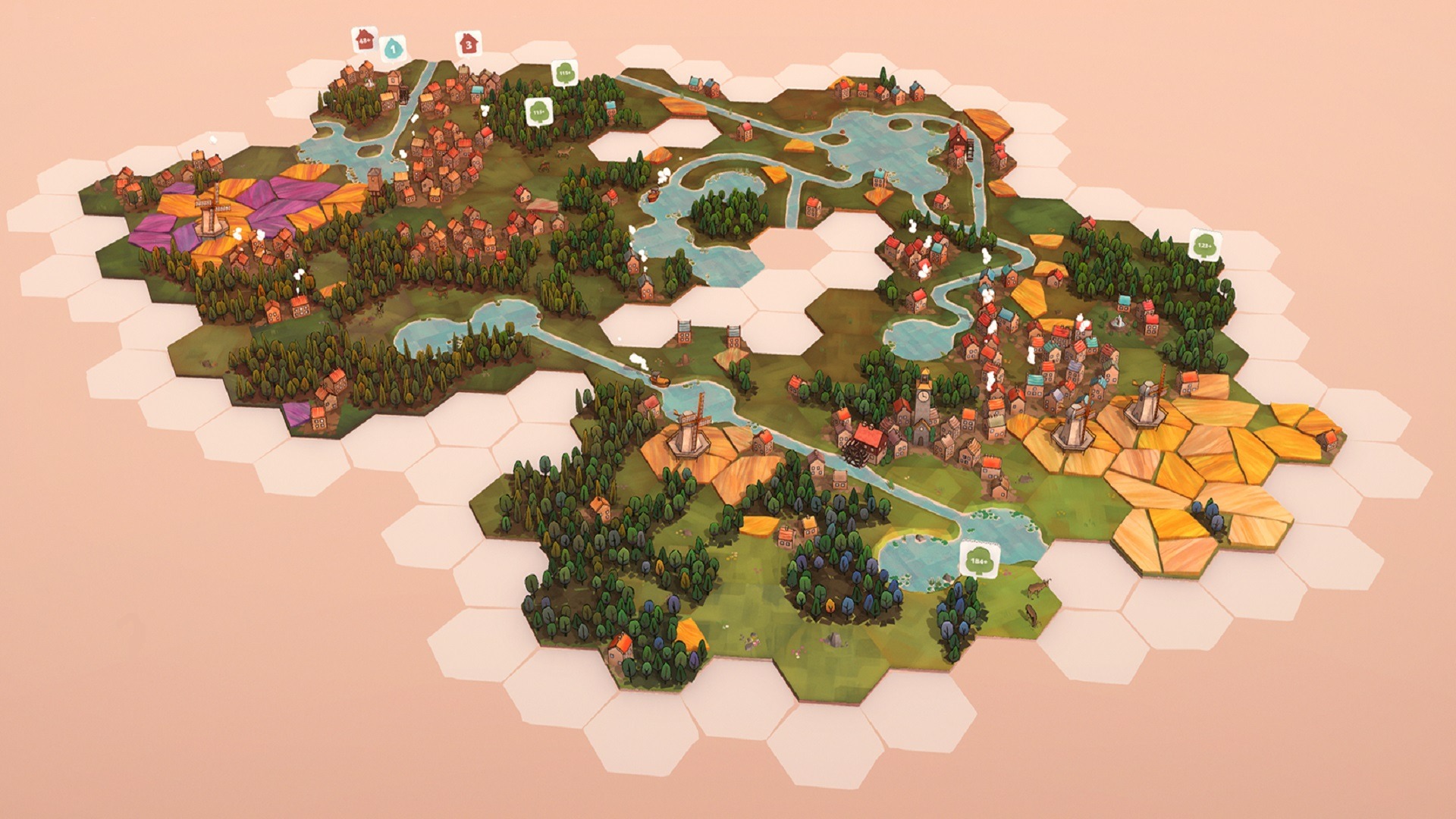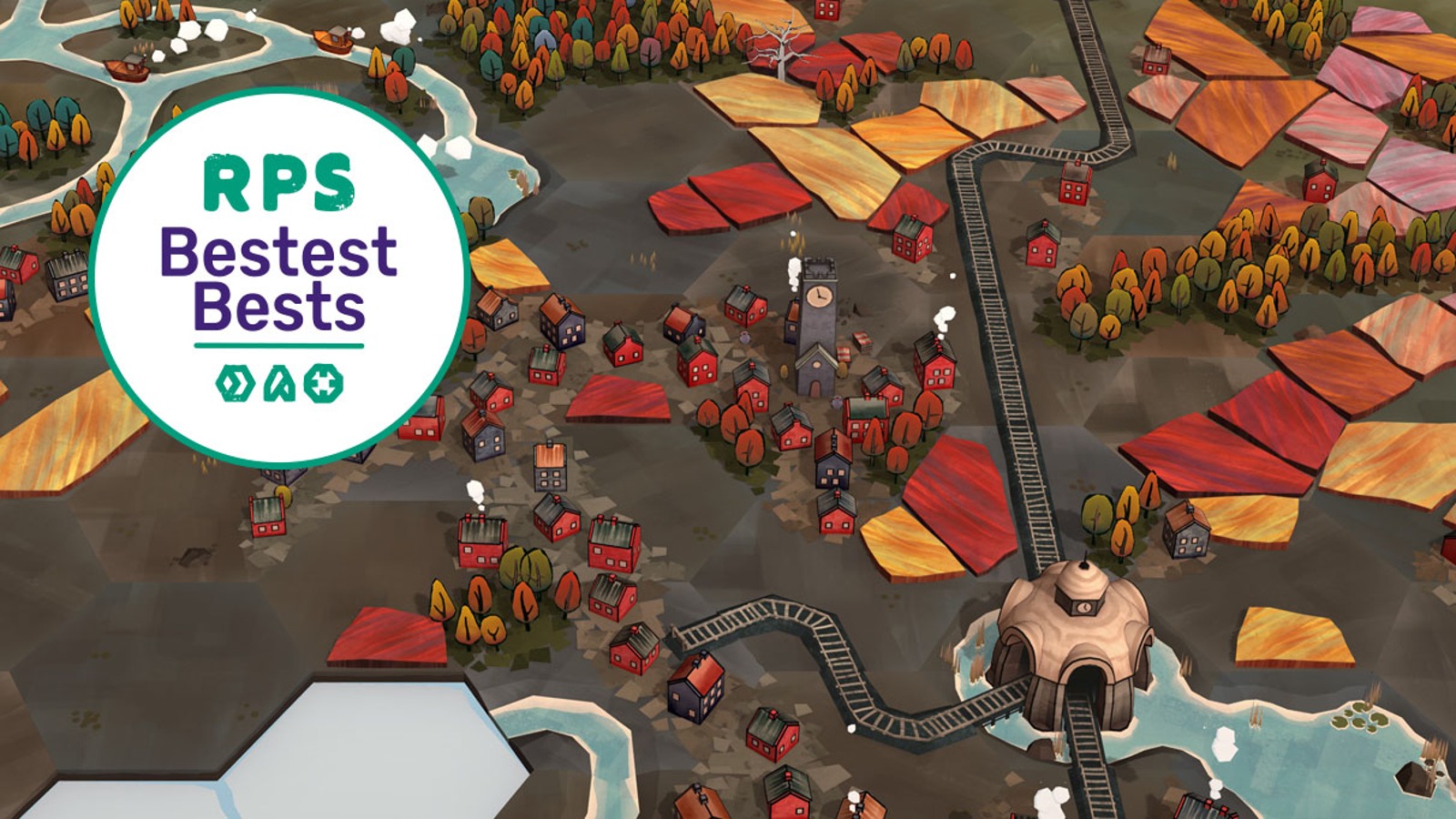Building Serenity, One Tile at a Time: A Review of Dorfromantik
Popular Now
 Free Fire Max
Free Fire Max
 Roblox
Roblox
 League of Legends
League of Legends
 NBA 2K24
NBA 2K24
 Call of Duty
Call of Duty
 Minecraft
Minecraft
 PUBG Mobile
PUBG Mobile
 Geometry Dash
Geometry Dash
 Valorant
Valorant
 Rust
Rust 
In a gaming world often filled with high-octane action and intense competition, a small indie title emerged that offered something truly unique: a tranquil, meditative experience. Dorfromantik, a village-building strategy puzzle game developed and published by the German studio Toukana Interactive, has not only captivated a dedicated community but has also received widespread critical acclaim. Since its early access release in 2021 and its full launch in 2022, the game has been celebrated for its simple yet deeply rewarding gameplay loop, its charming art style, and its ability to turn a puzzle into a relaxing, artistic endeavor. It has been a quiet juggernaut, culminating in its board game adaptation winning the prestigious “Spiel des Jahres” (Game of the Year) award in 2023, a rare feat that speaks volumes about its elegant design.
The premise of Dorfromantik is deceptively simple: you are given a stack of hexagonal tiles, each with various terrain types—forests, villages, rivers, and train tracks. Your goal is to place these tiles to create a beautiful, ever-expanding landscape. The strategic element comes from matching the edges of the tiles to maximize your score and to complete quests. A tile with a quest, for instance, might ask you to connect it to a village with a specific number of houses. Completing these quests is crucial, as they are your primary source of new tiles. When you run out of tiles, your game ends, turning each session into a high-score chase. It’s a perfect blend of puzzle and strategy, where every tile placement is a small, tactical decision that contributes to a much larger, beautiful picture.
 The Zen of Strategy: Gameplay and The Pursuit of Perfection
The Zen of Strategy: Gameplay and The Pursuit of Perfection
What makes Dorfromantik so addictive is its brilliant balance of casual relaxation and deep strategic thinking. You can choose to play casually, placing tiles wherever they fit, creating a sprawling, organic landscape that is a joy to behold. Or, you can embrace the competitive side, meticulously planning every move to get the highest possible score. The game rewards perfect placement—matching all six edges of a tile to the corresponding terrain—with a significant point bonus and a free tile. This system creates a constant, satisfying feedback loop. You’ll find yourself chasing “perfects” and carefully sculpting your landscape to create massive, unbroken clusters of forests or villages. This duality of experience—the game as a relaxing artistic tool versus a challenging puzzle—is a testament to its exceptional design. It’s a game that you can pick up for a few minutes to de-stress or lose yourself in for hours trying to beat your high score. This versatility is a major reason for its enduring appeal.
The game’s progression system is tied to its campaign mode, which is not a linear story but a series of long-term goals. By completing these tasks, you unlock new tiles, new biomes, and new quest types that add more complexity and variety to the game. These new elements, such as unique landmarks like windmills and water-train stations, not only give you more ways to score points but also add visual flair to your world. This constant stream of unlocks provides a powerful incentive to keep playing, always offering something new to discover. The procedural generation ensures that no two games are ever the same, giving it immense replay value. There are also a variety of game modes, from a fast-paced “Quick Mode” to a challenging “Hard Mode,” allowing players to tailor the experience to their specific mood.
 A Visual and Auditory Masterpiece
A Visual and Auditory Masterpiece
The game’s aesthetic is an integral part of its charm. The art style is simple, clean, and hand-drawn, giving it a comforting, board game-like feel. The soft, pastoral colors and subtle animations—a train chugging along a track, a boat drifting down a river—breathe life into your creations. The game’s sound design complements this perfectly, with a gentle, calming soundtrack and satisfying sound effects for tile placement. The overall atmosphere is one of pure tranquility, a welcome escape from the noise and stress of the outside world. It’s a game that is a joy to look at and listen to, and its aesthetic choices are not just cosmetic; they are fundamental to the game’s core identity as a relaxing and meditative experience. The visual language is intuitive, with the game highlighting matching edges to assist in your strategic planning, ensuring that the puzzle-solving is never frustrating.
In conclusion, Dorfromantik is a standout title that has rightfully earned its place as one of the best strategy puzzlers of its time. It is a game that proves simplicity can be the foundation for profound depth and that a calming aesthetic can be just as compelling as a thrilling one. Its ingenious blend of puzzle and strategy, coupled with its charming visuals and high replayability, makes it an essential game for anyone seeking a relaxing and rewarding experience. Whether you’re a high-score chaser or just looking to build a beautiful, idyllic world, Dorfromantik offers a perfect escape, one tile at a time. Its success, both as a video game and a board game, is a testament to its universal appeal and the timeless joy of building something beautiful.






 The Zen of Strategy: Gameplay and The Pursuit of Perfection
The Zen of Strategy: Gameplay and The Pursuit of Perfection A Visual and Auditory Masterpiece
A Visual and Auditory Masterpiece